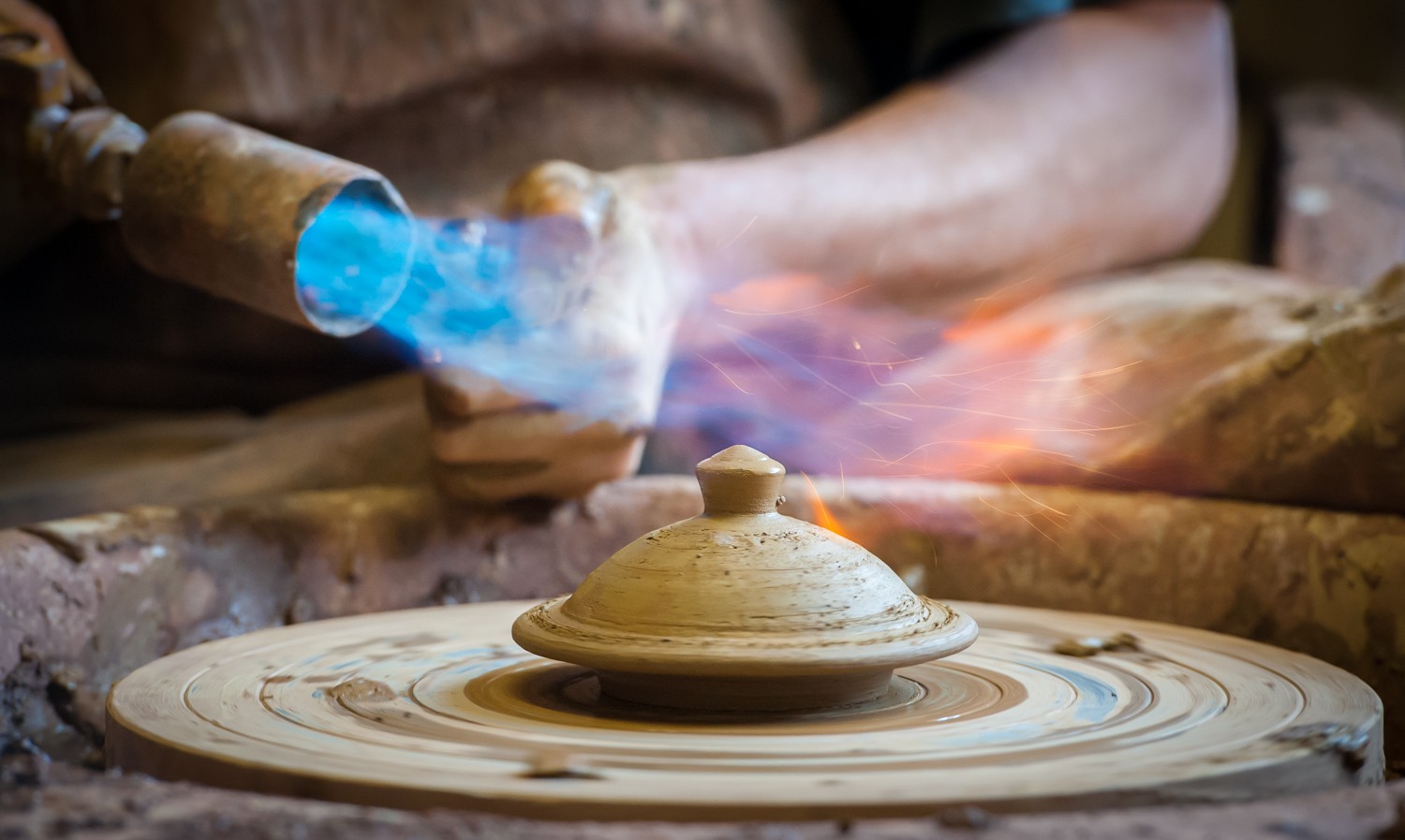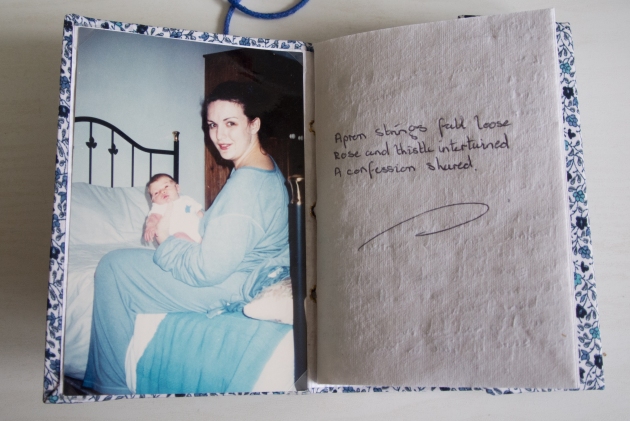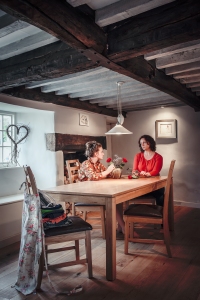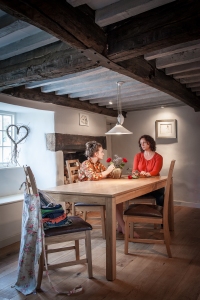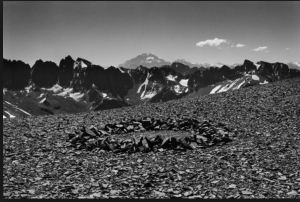This last part of Context and Narrative brings us to consider the constructed genre of imagination and staging – otherwise known as tableau photography. The course notes explain that the photographer has to work to blend the mix of the factual nature of the medium with artistic fantasy.
Project 1.
Following directly on from the introduction, the author points to cinema and films that give us a sense of time, place, atmosphere etc. Props, paint colour, lighting, décor and posing are all considered and added into the scene for a reason. The reason is to provide signifiers to enhance the narrative of the given film.
Exercise 1:
https://www.youtube.com/watch?v=OJEEVtqXdK8
Last accessed 15/10/2015
We are asked to watch this three-minute film clip to work out the signifiers are in the clip and look at how they are combined to create a sense of place and atmosphere.
The opening frames comprises of a busy street scene. 1950’s vehicles serve as part of the backdrop for the two main characters and immediately cause the 1950’s to be signified. The outfits and hair styles of each of them also signifies the 1950’s era.
The queue for a social venue and the sophisticated outfits are connotative of a classy date night at a music/ show venue.
The couple are in their twenties and the body language between them suggests the early stages of a relationship and this is backed up by lots of questions by the female who is unsure of what is going on around her – nuances of dominating male and unsure female are suggested through demeanor and gesture. The male’s status is beginning to emerge when he employs somebody to park the car for him. His demeanor is of a gentleman who is in control but an‘edge’ to him begins to emerge in nuanced NVC’s. His sharp sense dress and slick haircut further secured his position of superiority.
The next set of frames shows the male confidently leading the lady through the backdoors to avoid the queues. Security men greet him and let him straight through. The music and the wall décor signify a happy and bustling environment.
The male leads the lady through kitchens where he is familiar to staff. The kitchen is large with lots of staff and exotic fruit. Coupled with the queues outside the venue; connotations of a thriving business reinforce the emerging signified of ‘this is the place to be and to be seen’.
The paint in the corridor is a deep red velvet colour, which signifies opulence and sophistication.
The final set of frames brings us into the ‘full to bursting’ environment of a music and restaurant venue. Here there are lots of lovely signifiers that point us to realizing that this man is known, respected and is the ‘top dog’ at the ‘top venue’ in town.
When the doors open into the main venue, the staff immediately recognizes him and all staff drop everything to bring furniture into the very front of the audience. Surrounding men fall over themselves to shake hands with him. One lady looks really very indignant that her spot and therefore her status at the front have now been relegated.
The female character is now suspicious, ”What do you do?”
Male, ”In construction”
Female, “Why, your hands don’t feel like they are.”
Male,” I’m a union rep.”
The facial expressions indicate that he isn’t being truthful.
The course notes reinforce my conclusions of the film clip and then provide a link to Jeff Walls constructed image to research and consider.
http://www.tate.org.uk/whats-on/tate-modern/exhibition/jeff-wall/room-guide/jeff-wall-room-6 Last accessed 05/09/2015
The image for consideration is entitled:
After ‘Invisible Man’ by Ralph Ellison, the Prologue 1999–2000
The Tate Modern tells us that this image is based on the prologue of the book that the images title is taken from.
The prologue apparently describes an abandoned basement where the main character finds him-self – having fallen into it during a riot. He decides to remain there as a recluse. While living there he illegally connects over one thousand light bulbs. Wall has created the scene and taken one sentence from the prologue to anchor the image.
“‘Without light I am not only invisible, but formless as well.”
This image was ultimately constructed as an observation of unseen people in society.
Further to Tate Modern’s link, MoMA add a little to consider by noting that the photograph should not prompt a viewer to necessarily read the book – hinting at Barthes concepts of viewer authorship.
Having said that, there is a handy ‘click and look’ deconstruction tool that refers to the book a great deal!
https://www.moma.org/learn/moma_learning/jeff-wall-after-invisible-man-by-ralph-ellison-the-prologue-1999-2000-printed-2001
Last accessed 23/10/2015
It has been hard to source a large enough image online to really look closely at the content of this very ‘busy’ image.
Clues are scattered around the room. I don’t have any other knowledge of the book apart from that of which is noted above and I am not particularly knowledgeable of the USA culture in 1957 but I do have a little knowledge and I will attempt to deconstruct the image.
First of all is a man. The man is black and that in it self signifies that this might be related to race riots in USA that I believe were happening in America at the time. The space feels like a bunker and he is wearing similar attire to forces personnel. The single bed in a corner provides further connotations of forces ‘bunker’. Is he at war in his mind? Perhaps he is against the racist state? But, then there is a signifier of patriotism with a small flag hanging on one wall that provides with a clue in his location and maybe a hint of patriotism.
He is facing away from the camera and he is only fills a relatively small element of the frame. We can’t identify him and actually the room itself reflects who is the more we look.
There isn’t any natural light coming into the room and there are few bulbs on the ceiling that are lit compared to the amount of bulbs that could be lit. Are these light bulbs signifiers to his state of mind? Is only a small part of his potential illuminated?
The braces that he wears with his trousers may have a metaphor attached to them. I.e. ‘belt and braces’ that in the UK means to ensure security.
He has little in the way of materialistic items. Just enough to provide what he considers being essential. A bed, one soft arm chair, a gramophone, a book entitled ‘Gold dust’. I think these may refer directly to the prologue but these few items have been selected and they are important to him. Perhaps these are the items that cause the few of the light bulbs to be lit (if the bulbs do in fact represent his mind).
Drawing On Documentary And Art
The introduction notes that apart from literary influences in art, artists have also drawn inspiration from the wider art world.
The first example is Hannah Starkey who was inspired by Lord Tennyson’s ‘Lady of Shallot’.
http://www.maureenpaley.com/artists/hannah-starkey/exhibitions/1-hannah-starkey/6 Last accessed 06/09/2015
We are guided to reading the poem that can be found on this link:
http://www.poetryfoundation.org/poem/174627 Last accessed 06/09/2015
I am trying to connect with this particular work but I am struggling to be inspired with any sort of opinion at the moment.
Tom HUNTER looks really very interesting indeed. I’ve not stumbled across his name before but the image provided in the course notes leapt out at me because I enjoy Vermeer influence. The light, aesthetic and composition are really appeals. The notes inform us that Hunter’s work is inspired by stories that appear in Hackney’s local newspaper.
Reconstructing a real story within the realms of art appeals and I am now off to search the Internet for more of his work.
http://www.tomhunter.org/living-in-hell-and-other-stories/
Last accessed 06/09/2015
This link to his website provides a much deeper understanding of Hunter’s motives and inspiration for his work. He has resided in his community for long enough to understand the issues and the character of the place and balance his view of the community against the newspaper reporting of criminal events in the area. He then draws on further inspiration from artists and writers alike to influence the aesthetic and in some sets of work, the titles too – acting in relay.
This is certainly somebody to come back to.
Taryn Simon:
The course notes say, “She uses text and photography to bring ambiguity and deliberate disorientation to the viewer.”
The notes point to her work ‘The innocents’. This body of work is based on photography used as evidence in American courts and sets about questioning truths in photography and the consequences for those involved.
Certainly the issues of memory and the reliance of it as core evidence have long been recognised as problematic and an entire thesis could be written on the subject. The court system is a very different beast in the US though.
Philip Dicorcia:
The course author points us to this photographer with a resume that I can only dream of. One of his projects was ‘Hustlers’ and this project was funded by the US government at the heights of the AIDS epidemic and concentrates on male prostitutes.
The approach to this body of work is a combination of Tableau and documentary photography. This approach caused a stir at the time. Reality and fantasy is blurred.
In a lecture where Dicorcia speaks about this project, he explains how to took the subjects away from their environments and placed them in highly controlled and unfamiliar environments for the photograph to be taken.
In doing this, Dicorcia didn’t know the individual he was photographing nor did was the subject familiar with the environment.
For a minute I wondered what the value of this body of work was about (as it isn’t overtly explained anywhere). Then I realised that this is about the reality of the hustlers. The customer doesn’t care whom they are when they are purchased from the street and the hustler doesn’t care where he goes with his customer – the reality is the same and it is repeated time and again, day after day…. Until the hustler is dead from drugs or AIDS
Each photograph is carefully composed with light and colour. Then there are various signifiers in each image that serve as an anchoring commentary on different elements of a hustler’s life once deciphered.
For example:
1.
http://www.fotofeinkost.de/dicorcia-photographs-1975-2012-in-frankfurt/
Last accessed 17/09/2015
One of the photographs is of a hustler naked from the chest up walking through the car park outside the front of a supermarket.
The overall syntax of the image point towards the man as a product and various other signifier’s anchor the overall signified.
The male’s race may add an extra dimension that depends on cultural knowledge of slavery. He is parading for a purchaser while looking distant and submissive to his fate.
The backdrop provides the signage that is juxtaposed in such a way that ‘Mayfair Market’ becomes ‘A fair Market’.
2.
http://www.timeout.com/newyork/art/philip-lorca-dicorcia-hustlers
Last accessed 17/09/2015
Another image simple sees the back of a male facing the door of a bedroom. His hand touches the wall where his own shadow meets his fingertips. For me it signifies the shadow of death and the hustler facing a bright and almost heavenly light through the door reinforces this narrative.
Research Point:
The course notes ask us to watch this thirty-minute documentary about the cinematic construction of Gregory Crewdson’s photography.
https://www.youtube.com/watch?v=S7CvoTtus34
Last accessed 17/09/2015
1) The first point that I am asked to consider is if there is anything beyond aesthetic quality to these photographs.
For me it became quickly noticeable that Crewdson is able to capture the ‘otherness’ of a split second moment where a person’s fears, reality or emotions begin to take on realization. These moments are often captured many times through a cinema film sequence to help create atmosphere but as with life, the moment is fleeting and there is little time to ponder. The brilliance in his work is being able to identify that pivotal moment that creates such tension and then captures it in a photograph.
Questions leap out in every image:
“What’s happened to lead to this moment?”
“What is going through the subjects mind in this moment that will contribute to decisions making and outcome?”
“What is about to happen?”
Project 2:
The archive.
The course author explains the bodies of work by Adam Bloomberg and Oliver Chanarin.
The project had started with looking at a substantial archive of photographs amassed by photojournalists and civilians that covering the NI troubles. Images that were perceived to be demonstrating evidence of concerns over military practice had been marked with sticky back dots.
Images of the installation can be found here:
http://www.broombergchanarin.com/installations/people-in-trouble-dots/
Last accessed 16/10/2015
Further information about the book and body of work can be found here:
http://www.mackbooks.co.uk/pages/peopleintrouble/
Last accessed 16/10/2015
From this…
‘People in Trouble; Laughing and Being Pushed to the Ground’ – Contacts
and
‘People in Trouble; Laughing and Being Pushed to the Ground’ – Dots
The first set was, as it suggests, the full contacts and the latter set was the cut out of what was found under the dots.
The concealed spots of an image being uncovered and lifted from the wider context provide a different ambiguous narrative.
In the book text abstracted from verbal narratives of the events provide both a literal and a more poetic version of events.
This project reinforced the perils of truths within ‘straight’ photojournalism.
The next body of work the course point to for consider Nicky Birds ‘Question for Seller’s 2004 – 2006’
This link provides some basic written information on her approach with a video clip. The sound quality makes it near impossible to hear unfortunately.
http://nickybird.com/projects/question-for-seller/
Last accessed 16/10/2015
At the bottoms of this link though the purpose of the project was explained:
“Question for Seller enabled the audience to purchase, participate, and engage with two questions: what is our relationship to the past, and what is the value we ascribe to it?”
I seems that this project emerged from two vintage photographs that captured the artists eye. This led to many vintage portraits being purchased with the questions to the seller being.
“Where did you come across the photograph and what, if anything do you know about them?”
Once the collection of purchased portraits was complete, the body of work was then auctioned on ebay with an audience watching and participating in the auction.
Exercise:
Do the images, once on a gallery wall achieve an elevated status?
Cynically, anything that is purchased on ebay for mere pennies achieves an elevated status once placed in a gallery because it become more than a commodity and something that is to be considered with regard to origins and also past, present and future
Would I get more enjoyment from them situated on a gallery wall? I am not sure actually. I love flicking through old photographs at flea markets and find that I am more likely to make up my own stories about who they might be. I’d also find the once prized possession a little sad being rendered a flea market item unloved and no longer cherished. Perhaps this project is an extension of this – a sudden interrupted journey on the photography journey diversion – I know which I’d rather engage in without the influence of another though.
Perhaps in a gallery the images would have a poetic short reprieve from their ultimate destination – given up to mean whatever the new owner wants them to mean.
Where does their meaning derive from?
I’m not sure that I understand the question. The original meaning of the images and their future meaning are unknown. All we know now is that their current meaning is that they are tools for questioning our sense of value to such adopted photographs.
Would their value go up in Ebay now that they are considered ‘art’?
Only if people buy into that notion, I would have thought. People only buy art as either pure enjoyment or as investments. In this case, a trip to a flea market might provide an equally enjoyable vintage portrait for a fraction of the cost. The flea market photograph is unlikely to go up in value without being classified as art.
However, art isn’t defined by monetary value, the price of artwork is merely a by-product of success within certain circles of people.
Finally.
Bringing me to the final part of level 1, the course notes point me to Zoe Leonard and Cheryl Duyane film ‘Watermelon Woman’
‘Watermelon Woman’ seeks to explore the void that exists of black women in filmmaking through the earlier part of the last century. Black women weren’t named in the credits but were mentioned as their character. I.e. ‘Watermelon Woman’. It does go beyond this though as the history of black women is rarely documented – Cheryl Duyane and Zoe Leonard explore these concepts here.
The fabricated character is Fae Richards. Duyane plays her role and also crafts a photograph archive that was used both as a prop in the film. It also has its own life as a body of work as a separate photograph album outside the film.
I haven’t managed to source the film yet (unavailable on YouTube) but there is a link here that gives a flavor of the work and Duyane explains the purpose of a constructed archive and how it came about. Using the national archives that she had explored was just far too expensive.
https://vimeo.com/40534838 Last accessed 23/10/2015
Duyane explains that she enjoys nostalgia born from her childhood of thumbing through albums and these family albums inspired the compositions of her fabricated photographic history.
Duyane goes on to talk about history, which people write it and what is the truth of history. How much should we believe and how much do we question what we are told? It does seem to me that Western history references are predominantly manufactured by Arian males. I wonder what the history references would look like had the academics been from other cultures.
Duyane mentions the need for people to believe media. The truth of her film is that it is fiction and that is lost on many viewers even when they are later told that Fae Richards is fictional. Duyane finds this fascinating that people want to believe the character is real.
Using archives juxtaposed alongside my work is certainly something worth considering. Certainly Duyane’s work seems to take the lessons learnt in this course to the ultimate expression of the combined elements.
Exercise:
At this time I haven’t secured anybody wishing to participate. I won’t record conversations without permission.
If I have found somebody before assessment then I will add to this exercise.
Bibliography:
https://www.youtube.com/watch?v=OJEEVtqXdK8
Last accessed 15/10/2015
http://www.tate.org.uk/whats-on/tate-modern/exhibition/jeff-wall/room-guide/jeff-wall-room-6
Last accessed 25/09/2015
http://www.maureenpaley.com/artists/hannah-starkey/exhibitions/1-hannah-starkey/6
Last accessed 06/09/2015
http://www.poetryfoundation.org/poem/174627
Last accessed 06/09/2015
http://www.tomhunter.org/living-in-hell-and-other-stories/
Last accessed 06/09/2015
http://www.fotofeinkost.de/dicorcia-photographs-1975-2012-in-frankfurt/
Last accessed 16/10/2015
http://www.timeout.com/newyork/art/philip-lorca-dicorcia-hustlers
Last accessed 17/09/2015
https://www.youtube.com/watch?v=S7CvoTtus34
Last accessed 17/09/2015
http://www.broombergchanarin.com/installations/people-in-trouble-dots/
Last accessed 16/10/2015
http://www.mackbooks.co.uk/pages/peopleintrouble/
Last accessed 16/10/2015
http://nickybird.com/projects/question-for-seller/
Last accessed 16/10/2015
https://vimeo.com/40534838
